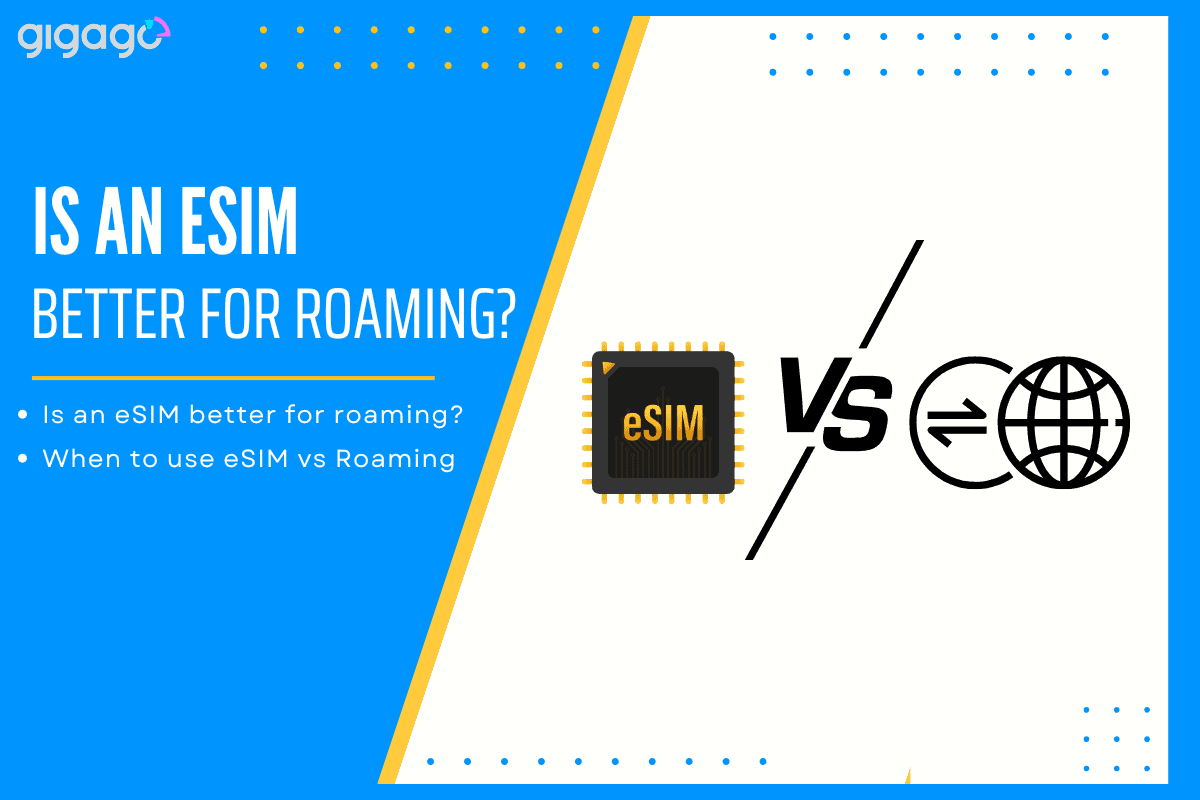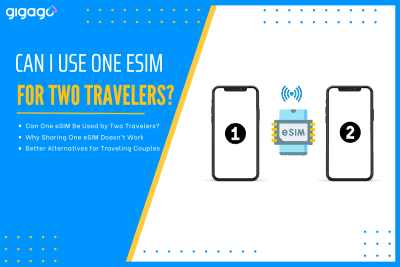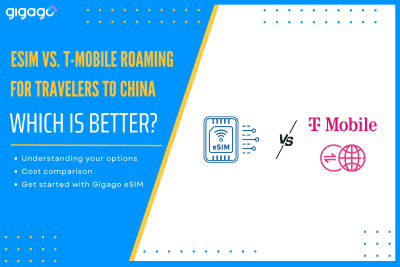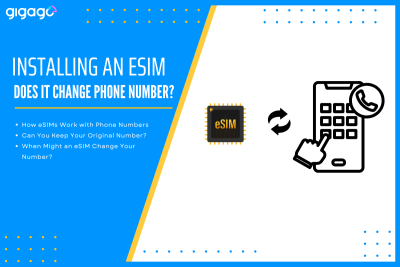When couples or friends travel together, it’s common to look for ways to save on mobile data. One question often comes up: “Can two travelers use the same eSIM?” The short answer is no – one eSIM cannot be used by two different travelers on two separate devices. However, there are practical alternatives that can […]
Is an eSIM better for roaming?
When planning international travel, staying connected without breaking the bank is essential. Many travelers find themselves asking: Is an eSIM better for roaming? This guide explores the differences between traditional roaming and eSIM technology, helping you make an informed decision for your next trip abroad.

In this article
I. What are eSIM and international Roaming?
When traveling abroad, you have two main options for staying connected: traditional international roaming or using an eSIM.
International Roaming
International roaming works with your existing carrier and phone setup:
- Turn on “Data Roaming” in settings to connect
- Keep your regular phone number for all communications
- No additional purchases needed
Convenience comes at a cost. Carriers typically charge $5-15 daily fees or high per-megabyte rates that add up quickly.
eSIM
eSIMs offer a modern alternative without physical cards:
- Purchase online and receive a QR code by email
- Scan and activate instantly on your device
- Choose affordable country-specific or regional plans
Most newer phones support eSIM technology. This option works well for multi-country trips, allowing easy switching between plans without swapping physical cards. Budget-conscious travelers appreciate flexibility and potential savings.

III. Is an eSIM better for roaming?
Both options allow you to stay in touch abroad without buying a physical SIM card, but they differ in many ways.
1. Convenience
| Feature | International Roaming | Travel eSIM |
| Setup | Instant (just toggle ON) | Takes 2-5 minutes to install |
| Physical SIM swap | Not needed | Not needed |
| Buy in advance | Not required | Recommended before departure |
Traditional roaming wins for pure simplicity – just flip a switch in your settings and you’re connected. eSIMs take a few minutes to set up by scanning a QR code, and it’s best to do this before your trip while you have good internet.
The small setup time for eSIMs is worth it for many travelers because of the money you’ll save and the flexibility to choose different plans. Both options are much easier than hunting for local SIM cards at your destination.
Takeaway: Roaming is slightly more convenient, but eSIM is easy to use with minimal setup.
2. Cost
When traveling abroad, your choice between international roaming and eSIM can significantly impact your budget. The cost difference is often substantial:
| Criteria | International Roaming | Travel eSIM |
| Data pricing | Expensive ($5-$15/day or per MB) | Affordable ($1.50-$10/plan) |
| Budget control | Unpredictable, postpaid | Transparent, prepaid pricing |
International roaming charges add up quickly, especially on longer trips. With daily access fees or per-megabyte billing, a week-long vacation could cost $35-105 just for basic connectivity. eSIMs offer prepaid plans with clear pricing, allowing you to know exactly what you’ll spend before your trip begins.
Takeaway: eSIM offers significant savings, especially for longer trips.
3. Features
Both options offer different advantages depending on your communication needs:
- International Roaming: You continue using your main phone number for calls, texts, and receiving verification codes (OTPs)
- eSIM: Typically provides data-only service, but you can keep your main SIM active for calls and texts while using the eSIM for internet
This combination gives you the best of both worlds – affordable data through your eSIM while still receiving important messages and calls on your regular number.
4. Network quality and coverage
The reliability of your connection varies between these options:
- International roaming limits you to your home carrier’s partner networks in each country
- eSIM providers typically connect to multiple local networks, automatically selecting the strongest signal available
- eSIMs often provide lower latency as your data is routed regionally rather than through your home country
This flexibility makes eSIMs more reliable, especially in areas with spotty coverage. You’re not tied to a single network, giving you better chances of maintaining connections wherever you travel.
IV. When to use eSIM vs Roaming
Both options serve different purposes for different travelers.
Choose an eSIM for budget-friendly data on longer or multi-country trips. It offers significant savings when you primarily need the internet for maps, messaging, and social media, helping you avoid unexpected bills while staying connected.
Opt for traditional roaming on short trips where convenience outweighs cost. When you need your main number for calls and texts or want zero setup hassle, roaming provides immediate connectivity despite the premium price.
V. Recommended travel eSIM: Choose Gigago
Gigago offers reliable connectivity for international travelers with coverage in over 200 countries and regions. Plans start at just $1.50 with no hidden fees, making it budget-friendly for any trip.
Setup is simple – receive your eSIM instantly via email, scan the QR code, and activate when ready. No physical SIM swapping means no hassle upon arrival. Their 24/7 customer support is available in both English and Vietnamese via WhatsApp if you need assistance.
Visit Gigago.com to check device compatibility and explore country-specific plans for your destination. Their combination of affordable pricing, extensive coverage, and easy setup makes Gigago a smart choice for staying connected abroad.



